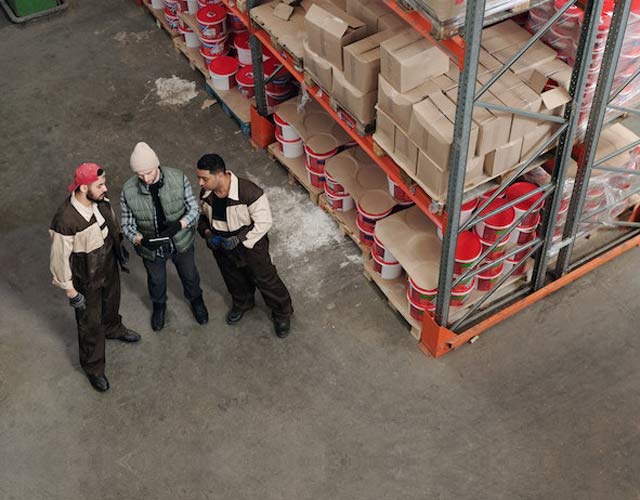The aim of ATEX training is to provide companies with the knowledge and skills to protect their personnel and facilities from explosion hazards . Participants will learn how to identify potential hazards, assess risks and implement effective prevention measures in accordance with ATEX regulations. As a result, companies can reduce the risk of accidents, improve workplace safety and avoid financial losses due to property damage and production downtime. In addition, by providing this training to their staff, companies can strengthen their regulatory compliance and safety reputation.
In ATEX zones , employee safety and the protection of industrial equipment is a major concern. Preventing explosions is an obligation of companies, provided for by Directive 1999/92/EC and the Labor Code. Raising awareness of the risks in an ATEX zone for each worker is therefore essential. Workers must have specific authorization before working in explosive atmospheres.<:p>
ATEX (Explosive Atmospheres) training is mainly aimed at professionals who work in potentially explosive or flammable industries , such as the petrochemical industry, gas production, powder production, the pharmaceutical industry, paint and varnish production, as well as mining industries.
These professionals may include engineers , technicians , safety supervisors , site inspectors , operators, and maintenance managers . People working in these industries must understand the risks associated with explosive atmospheres and know how to manage them safely to avoid accidents and serious incidents.
ATEX training can help these professionals acquire the knowledge and skills needed to work safely in potentially explosive environments , by teaching them the basic principles of safety, the rules and regulations regarding explosive atmospheres, as well as methods of preventing explosions and fires.
The Labor Code (art. R4227-49) also provides for obligations relating to the safety of employees in ATEX zones and the site in general. The operator must implement appropriate measures (zoning, marking, monitoring, etc.) and the necessary technical resources on its site. The drafting of a DRPCE (document relating to protection against explosions) is also required. To enable its employees to work in complete safety, the employer must train them and raise their awareness in terms of protection against explosive risks.
Those working in ATEX zones must have undergone specific training. This enables them to identify ATEX zones, assess their risks and react effectively in the event of danger. ATEX training is intended for anyone working in a risk zone. It is aimed at all sectors of activity, regardless of the size of the company, as long as they involve the storage or handling of flammable products (gas, dust, vapours, etc.). Different organisations offer training adapted to the nature of the hazards of the activity and the needs of each company. After the training, an authorisation is issued to workers.
A2S designs, manufactures and supplies ATEX and industrial protection solutions.
A2S is committed to working alongside you to meet your highest security requirements es.Vous Are you facing a major challenge and looking for the most suitable solution for your application? We are here to listen to you and can offer you personalized support tailored to your project, whatever your challenge.

A2S is a leading company specializing in explosion protection and industrial risks . For several years, A2S has been a major player in the field of industrial safety and offers a wide range of products and services designed to protect companies and their employees against explosion risks.
Our company has extensive experience in the field of ATEX regulations and is recognized for the quality of its services. We are able to provide complete solutions to meet the requirements of our customers, from risk assessment to the implementation of prevention measures.
Our teams are made up of highly qualified experts , who have the skills and knowledge necessary to support our customers throughout their explosion protection process.
By choosing A2S for your ATEX training , you can be assured of working with competent and experienced professionals , who will provide you with their expertise and know-how to help you reduce the risks of explosion in your company.

New! The Ultimate ATEX GuideDiscover our guide to ATEX. We cover flammable materials, classifications of hazardous areas, protection methods, European standards and directives and much more.
People working in an ATEX zone are required to hold a qualification . This depends on the intervention zone and the level of danger. To obtain this qualification, each worker must undergo ATEX training .
What is ATEX certification?
An ATEX qualification is a certificate issued by an approved training organization. It attests to a worker's ability to carry out work related to an ATEX zone in accordance with standards and in complete safety. The worker can be trained at level 0, 1 or 2. At the end of their training, they will obtain the qualification corresponding to the level they have chosen. This certificate is valid for three years. The worker will have to complete refresher training to renew their qualification.
Each level of danger corresponds to a qualification. But in general, training teaches workers the fundamentals of ATEX regulations. At the end of the training, they will know the requirements related to the safety of people and equipment in an ATEX zone. They will also have to adopt the right actions and detect a risk of explosion, depending on the level of the chosen zone.
check_circle
check_circle
Nous utilisons des cookies tiers pour améliorer votre expérience de navigation, analyser le trafic du site et personnaliser le contenu et les publicités. En savoir plus